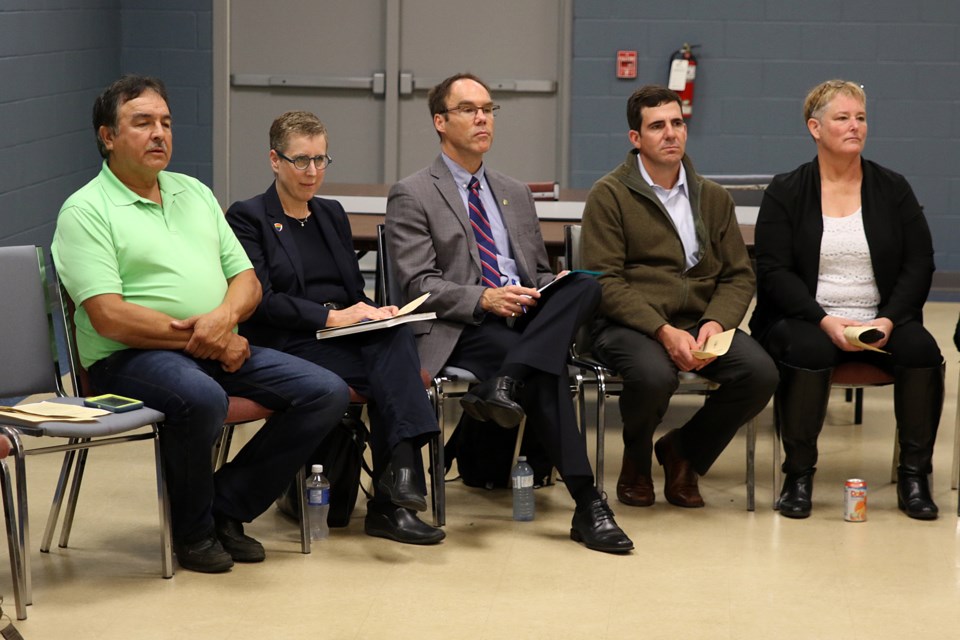FORT WILLIAM FIRST NATION -- Peter Collins recently took a tour of the Thunder Bay District Jail.
He wasn’t surprised to see a disproportionate number of inmates of Aboriginal descent behind bars. But it still troubled the Fort William First Nation Chief.
On Wednesday he joined about 30 others to discuss the demand and support to create partnerships involving alternative options for Indigenous corrections in the Thunder Bay area.
Collins said the discussion makes a great starting point to fix a problem that extends well beyond prison walls.
“I think today’s step is a step in the right direction,” Collins said.
“It’s our problem, but let’s fix it together.”
Alternative restorative justice options, such as a proposed healing lodge that would be open to Aborninal and non-Aboriginal inmates alike, are ways to help stop the cycle and put prisoners back on a straight-and-narrow path, Collins said.
“A lot of them are (in jail) for smaller crimes,” Collins said. “Some of them are there for major crimes. I think at the end of the day, sending them to a federal institution doesn’t always work. I think this will help and hopefully create a solution to deal with the systematic problems we have in our communities.”
The healing concept is an ideal one, he said, prior to the discussion taking place.
“You heal them, train them, educate them and put them back on the streets so they can become a productive part of our society,” Collins said.
“I think for whatever reason they get lost in the system and bogged down in that system. They get tied to that system and we need to teach them and guide them out of that system so they’re not back there back and forth.”
The statistics can be staggering.
At the provincial level, First Nations people make up one-quarter of the incarcerated population, but are only three per cent of the overall population. The number is only slightly lower at the federal level.
It’s even worse for females, who make up 38 per cent of the women behind bars provincially and 31 per cent in the federal system.
Peter Linkletter, deputy commissioner for the Prairie region for Correctional Services Canada, acknowledged there are several reasons why so many First Nations people are incarcerated, including the Sixties Scoop, colonization and the lasting impact of the residential school era.
The purpose of Wednesday’s conference to see what can be done to improve correctional results with Aboriginal offenders.
“We’re at the very early stages right now,” Linkletter said, adding it’s an opportunity to bring First Nations and others in the community together with service providers, including police.
“It’s a discussion around how we are doing in terms of our results with the Aboriginal community and what might we be able to do.”
It’s too soon to say what those solutions might look like, he said.
